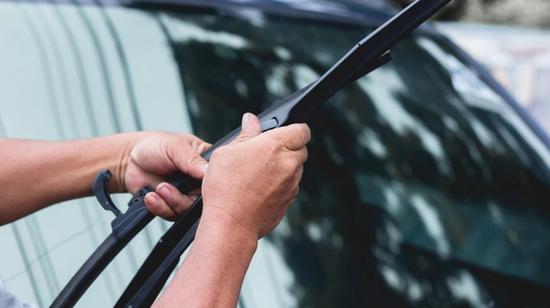Do you know how to charge and maintain your car battery?
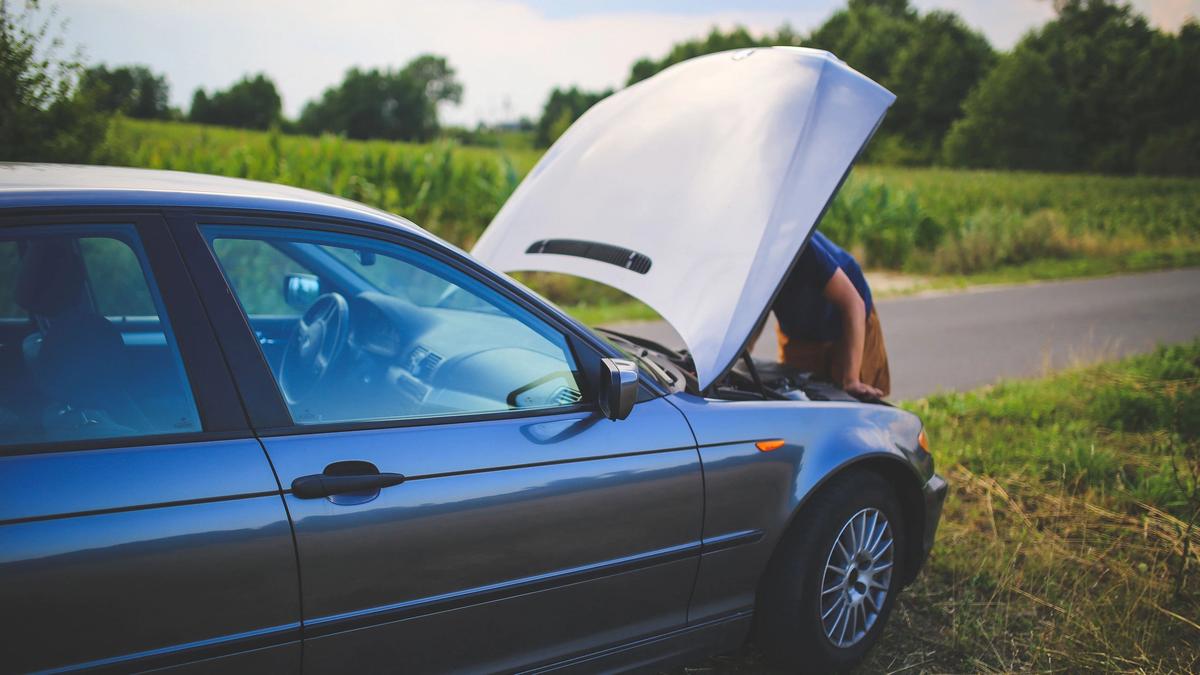
Your car battery needs maintenance. By charging your battery correctly, you can extend the battery life of your car. In this guide, we tell you what you need to know about the battery, how to maintain it and how to charge a dead battery.
Your car battery is an essential part of starting your car. A damaged or flat battery can cause problems quickly - especially in the cold winter months.
A dead battery is one of the most common reasons Viking helps motorists. While we can get to the scene quickly with a new battery or jump starter, it's wise to take good care of your battery to keep it in good condition and avoid problems.
By following our battery maintenance advice, you're less likely to run down your battery unexpectedly, causing problems. However, if it does, Viking will give you tips to keep you going.
Why car battery maintenance is worth it?
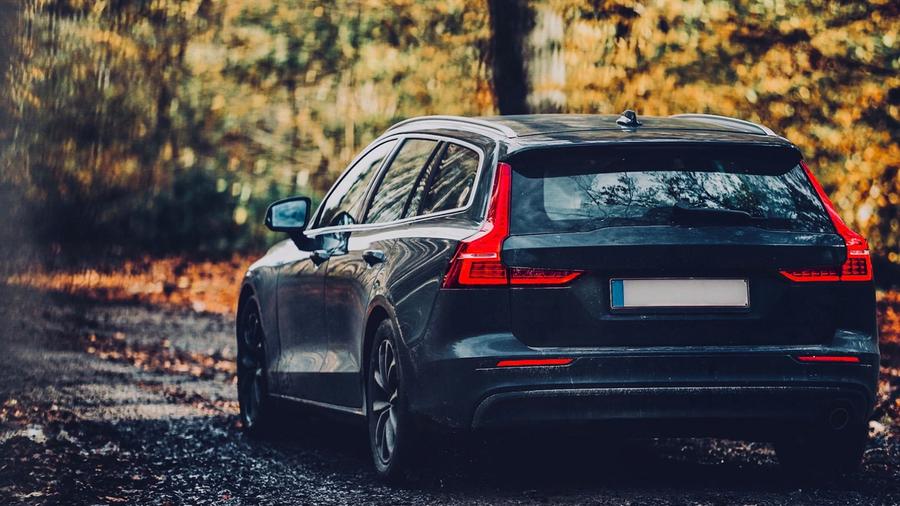
Car starting problems are always frustrating. A dead car battery is one of the most common reasons why a car won't start. However, it doesn't take much maintenance to avoid this - regular battery checks and proper maintenance can save you money and time in the long run.
Longer battery life
A well-maintained battery will last longer than one that hasn't been maintained for years. How you use your battery determines how much and what kind of maintenance it needs. It is impossible to say how long a battery will last, as this depends on the use and maintenance of the battery. However, on average, a battery usually starts to lose its capacity after 5-6 years.
If the battery is completely discharged, it is worth replacing it with a new one. Once discharged, a battery will no longer work effectively even if you charge it to the full.
Avoid battery drain
The battery of any car can run down. If more power is drawn from the battery than is charged, it will eventually lead to battery drain.
This will result in the engine no longer starting. If the battery is completely discharged, nothing happens when you turn the ignition key or press the start button. Even the normal warning lights on the instrument panel will not come on.
There may still be some charge left in the battery, so everything may seem normal until you try to start the car. If the battery is discharged, you may only hear a click or notice that the starter motor is running slowly but the engine won't start - there simply isn't enough power to start it.
In older cars, the battery was only used to start the engine, but modern cars depend on battery power even when driving. That's why a modern car can't necessarily be started by pushing, but the battery needs to be charged first - or preferably replaced.
Proper battery maintenance will greatly reduce the need for new batteries.
Reduce the likelihood of problems in winter
An old battery in poor condition can cause problems in winter frosts, as the cold further reduces its capacity to retain charge. Even if a car battery works fine in summer, it may not be able to start the engine in winter.
This is a clear sign that it's time to replace your battery. If the battery reaches this point, it can no longer be saved. The only alternative to replacing the battery is to park the car in a warm place and avoid the battery getting cold - but this can be a tricky solution in winter.
If you have maintained your battery regularly and made sure it is accepting a charge, your engine is much more likely to start on cold winter mornings.
Short journeys are not good for the battery, especially in winter
Car batteries are primarily designed to provide a lot of power in a short time when the engine is started. The battery charges while driving until it is full. If you only drive short distances, the battery won't be able to charge sufficiently and the battery may discharge completely - which can damage the battery and, in the worst case, leave you stranded on the road.
Short journeys are among the most common causes of battery drain - especially in winter. This is why it's a good idea to drive a longer distance every now and then, especially if your car is stored outside in the cold.
Maintenance can save money
Cleaning your battery and regular, proper maintenance charging will help your battery survive the winter cold.
Over time, however, batteries will wear out as they drain and recharge, but with proper care and maintenance they will last longer, so you won't have to buy a new battery too often.
Why is the battery drained?
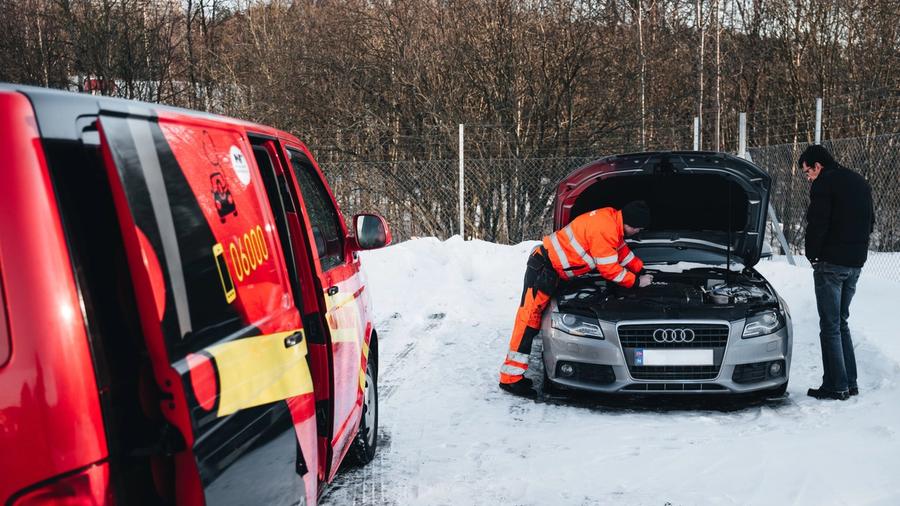
Akkuongelmat ovat yleisimpiä syitä turvautua tiepalveluun.
Many reasons can prevent your car battery from holding its charge. The battery may also simply be flat. However, there are many ways to reduce the risk of battery depletion.
Left on headlights or electronics can drain the battery
Most modern cars automatically switch off lights and electronics to save battery power if the engine has been switched off for some time. This safety mechanism ensures that the battery will not be drained even if you forget to turn off the lights.
In slightly older cars, you should remember to turn off the lights yourself to avoid draining the battery.
Some cars, including modern cars, still have a function that can cause the battery to run down. If you turn on the indicators while the engine is switched off, the parking lights on that side may come on. This can potentially drain the battery if the car is left stationary for long periods.
Dirty battery surface can conduct electricity
The battery can also discharge because it is dirty. In this case, a layer of dirt can conduct some electricity from one end of the battery to the other, discharging the battery over time.
Minor power leaks do not cause any symptoms other than the battery discharging after the car has been inactive for a while.
This is not a problem when the car is used regularly, but it is still a good idea to clean the battery terminals from time to time. There is no risk of electric shock. A cloth moistened with a mixture of water and detergent can be used for cleaning. For example, you can check and wash the battery every time you add a glass cleaner.
Poor charging can drain your battery quickly
When driving, the car battery is usually charged by the charger. It consists of magnets and copper wire that generate electricity as they rotate. The charger is connected to the engine by a drive belt and pulley, so it rotates and charges the battery when the engine is running.
Like most other devices, a charger that charges the battery can stop working. If you see a red warning light with a battery symbol while driving, it indicates that your car is not getting the charge it needs.
Take the car to a garage as soon as possible to solve the problem. The car will work fine at first, but if the battery does not charge while driving, the car will soon leave the road.
How to charge your car battery
There are basically two reasons to charge the battery: maintenance charging and jump-starting (auxiliary power) when the battery is discharged.
If you plan to leave your car unused for more than a month, you should connect a maintenance charger to its battery. Its operation can be compared to that of a car charger. It ensures that the battery stays fully charged at all times.
If the battery is depleted, you will need a jump-start - either from another car battery or from an auxiliary starter.
Battery maintenance charging
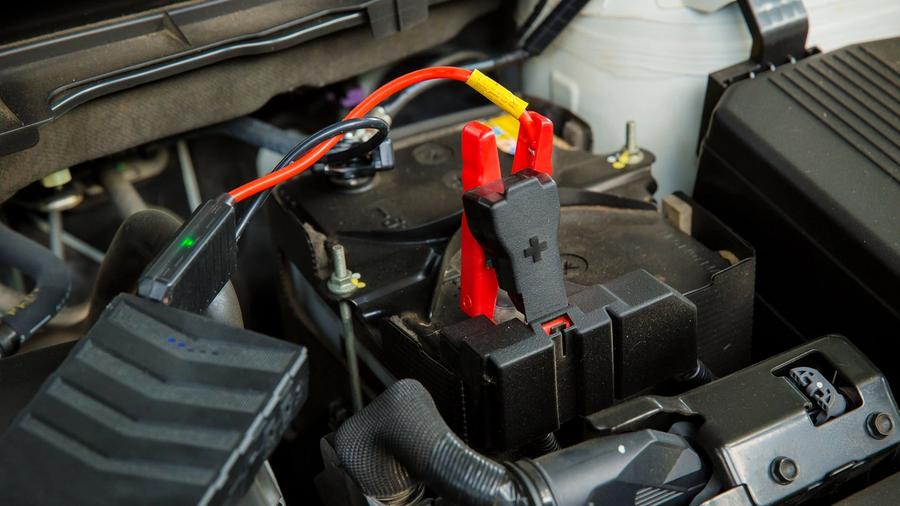
Maintenance charging is easy, but it requires you to park near an outlet. You can buy a charger for a few tens of pounds at most car parts stores. Plug the maintenance charger into an electrical outlet and properly secure the clamps to the battery terminals.
The battery terminals are usually marked with plus and minus signs, or red and black, in the same way as the cables.
Here's how it worked:
- Park the car near an electrical outlet.
- Turn off the car engine.
- Close the car to a car parked close to the ignition.
- Connect the black plug to the negative terminal.
- Plug the black plug into the electrical outlet.
- Check the charger to make sure the battery is charging.
It normally takes about 24 hours to fully charge an empty car battery. Remember, however, that if the battery is completely discharged, it usually retains less charge than a new battery.
Check the battery with a multimeter
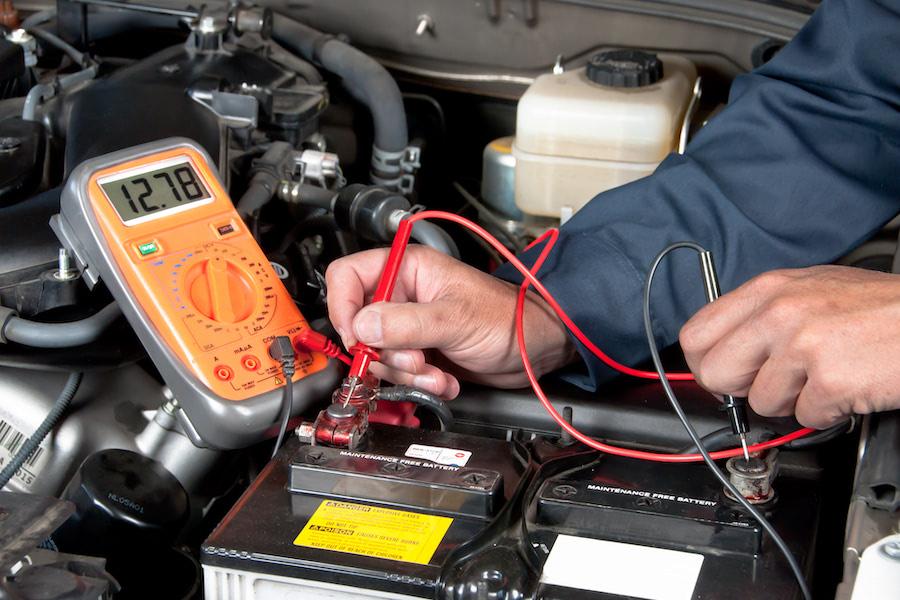
Checking the voltage of your car battery with a multimeter.
If you just want to check the condition of your car battery, a multimeter, also called a voltmeter, will do the trick.
It allows you to measure the battery voltage easily, so you can quickly see if everything is OK. You can buy a multimeter at most hardware and electronics chain stores.
This is how you check the battery with a multimeter:
Before starting, make sure the multimeter is set to DC (direct current).
- Connect the red connector to the positive terminal of the battery.
- Connect the black connector to the ground / bare metal.
- Read the voltage on the multimeter display.
A full battery in good condition should have a voltage of 12.7 volts when the engine is switched off. If the voltage is slightly above 12 volts, the battery is about half full - and if it is below 12, the battery is discharged.
If the engine is running, the multimeter should show a voltage of about 14 volts. This is the charging voltage and means that the battery is charging correctly.
Do I need to replace my car battery? Keep these things in mind

If your battery fails on the road, Viking is ready to help you!
If the battery has been completely discharged several times, it's time to replace it. It's not a big job, and almost anyone who has held a wrench in their hand can do it, but there are things to bear in mind.
- The new battery must be the same size as the old one.
- The capacity must be at least as large as the capacity of the old battery.
- Once you have replaced the battery, make sure that all the wires are connected correctly.
- Make sure that the battery is properly connected and screwed in place.
Here's how to replace your car battery yourself:
- Locating the battery
- The battery can be located in several places in the car. The most common location is under the bonnet, but in some cars it can be in the boot or under the back seat. So start by locating the battery.
- Loosen the battery boots
- Remove the battery shoes from the battery terminals. They are attached with a small nut that can be easily removed. Lift them off and bend the cables so that they are out of the way.
- Remove the battery from the car
- The battery is attached to the car with clamps. They vary from car to car, but they usually have a nut that holds the battery in place with a plate or similar. Once the nut is removed, you can lift the battery out.
- Make sure you get the right battery
- When you buy a new battery, it's a good idea to take the old battery with you or take a picture of it. Then you can be absolutely sure that you are getting the right battery in terms of size and capacity.
- Inserting and securing the new battery
- Insert the new battery. Screw it into the bracket. Connect the cables to the battery in the correct direction.
Although the battery is simple, it can cause a lot of problems
The battery is one of the easiest things in a car. If you clean it regularly and charge it properly, it's usually not much of a problem - but if you don't look after it, your journey could be cut short before it starts.
Modern batteries don't need battery water, for example. What's more, their ageing process is easy to notice. That's when it's time to replace the battery - do it yourself or call us at Viking so we can replace it for you.
In short: Car battery maintenance
These are the most important things you need to know about car battery maintenance and charging:
- Regular maintenance can extend the life of your battery.
- Keeping your battery clean and charging it for maintenance can help you prevent starting problems.
- Keeping your car battery clean and maintained can help prevent battery damage. Check the condition of your car battery with a multimeter.
- If the car is driven only short distances, the battery may not charge properly and will be damaged in the long run.
- Avoid starting new cars with jumper cables. An auxiliary starter is a safer alternative.
- You can replace the battery yourself, but make sure that the new battery has the same characteristics as the old one.
Thinking of something else? The answers can be found on our FAQ page. Also remember that Viking can help you with an auxiliary starter and battery replacement.


